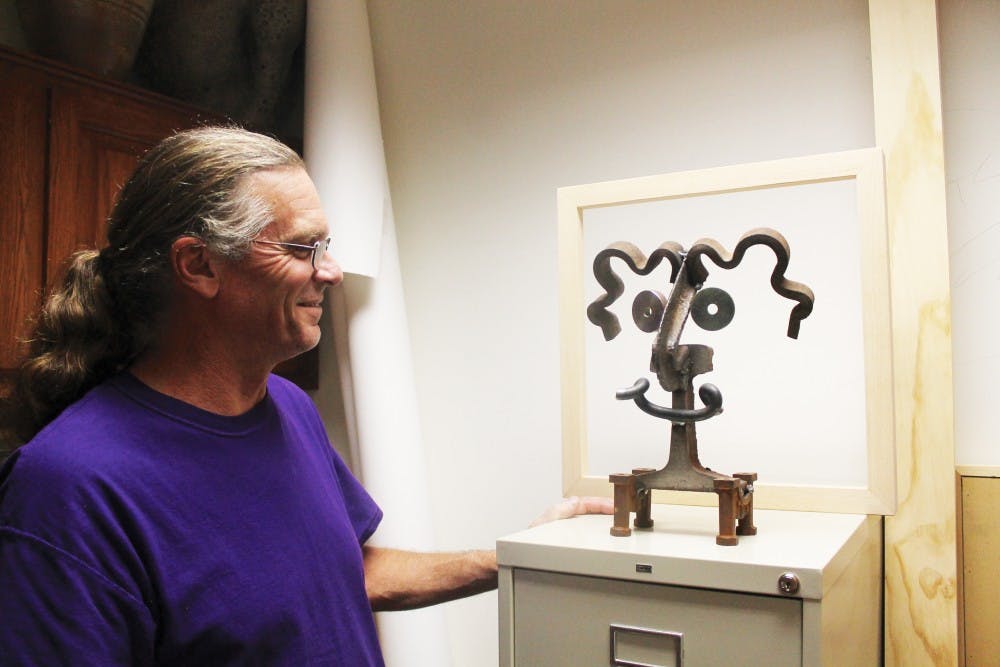By Becca Eis | Echo
When driving on the country roads of Grant County, there is seemingly not much to look at . . . unless you come across John Reishus's yard.
"A lot of the steel sculptures from getting my master's are in my yard, and it seemed appropriate because you drive around in the country, and you see farmers with old rusty farm implements all over their yards, and if you get to parts of my yard there's old rusty sculptures, and so I'm doing my part," said Reishus, an '87 alumnus and adjunct art professor.
When Reishus came to Taylor as a freshman in 1981, the only class he knew he wanted to take was wheel-throwing. Little did he know that he would be teaching that same class to students like him years later.
After his junior year, Reishus began working for a potter outside of Muncie. Years later, after being a part-time student and part-time potter, Reishus graduated from Taylor. In 1991, Reishus was asked to come back to Taylor to teach. It was then that he decided to attend graduate school and discovered his passion for welding.
His first graduate school project was a five-panel folding screen full of copper panels with steel frames that he welded together. Reishus received his master's in sculpture from Ball State University after only one calendar year and returned to his alma mater to teach the classes he enjoyed as an undergrad.
"I'd always said I didn't have the patience to teach. Well, my son was born in '86, and my daughter in '88, and I discovered, or the Lord gave me, more patience," said Reishus with a laugh.
Since becoming a professor at Taylor, welding has become more of a hobby for Reishus. Different from any other art form, Reishus enjoys the immediacy of welding as opposed to woodworking or ceramics where you have to let the pieces dry.
When beginning a new project, Reishus will go to a junkyard and pick up anything that intrigues him. He expressed that one of the most difficult parts of welding is finding a source for material.
"Just different things, I'll just start putting them together and see how they look . . . it's in my head, and I just have to make it concrete, and that's the trick," Reishus said. "And there's always some translation. It always looks different in your head than it does in real life, but that's pretty much true for everything."
One of his most recent projects was building the wood kiln for the art department, which included welding the steel frame that holds it all together. Reishus has hopes of completing future projects with the use of his personal welder once he finds a source for material and has more time; for now, he will allow others to admire the intriguing display of past work in his lawn.



